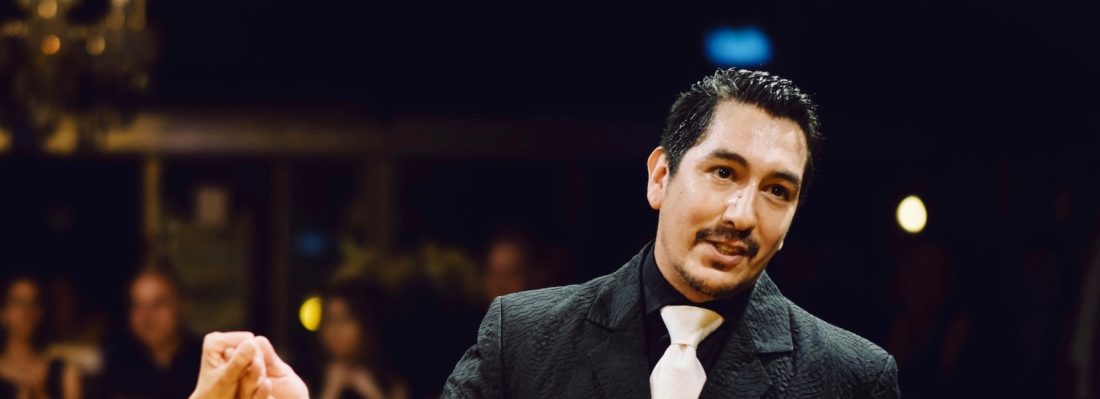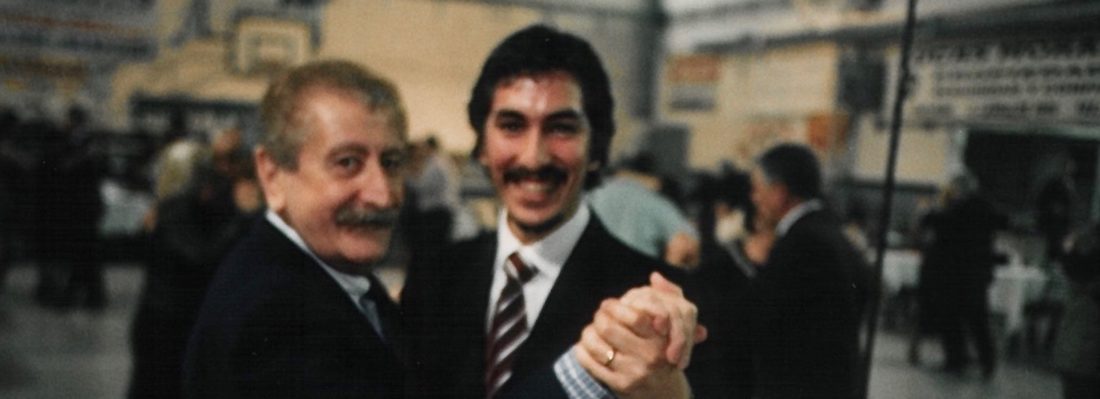Where does the name Urquiza come from?
The name “Urquiza” style is derived from the name of the Villa Urquiza district in the north of Buenos Aires. This district is named after the third Argentine President Justo José de Urquiza (1801 – 1870).
The name of the style was not an independent decision of the group that created, danced and developed this style. Dancers from other groups gave it the name “Urquiza” because its founders / representatives came from the Villa Urquiza district, lived there or met with the group (the “Barra”) there.
Who developed the style?
Urquiza as a modern tango dance style emerged in the mid-forties of the 20th century. Luis “Milonguita” Lemos, also called the “secret – el Misterio de Urquiza” is considered to be its founder. He came from “La Siberia”, an area in the Villa Urquiza district, which is where the “Club Sin Rumbo” is today, between Avenida Crisologo Larralde and Avenida Congreso, as well as Avenida De Los Constituyentes and Calle Diaz Colodrero. That was the poorest area in Villa Urquiza at the time, sparsely populated, but with people who wanted a home of their own and strived to achieve a better life.
Ricardo “Chino Períco” Ponce, also an important representative of the Urquiza style, says about Milonguita: his clothes and shoes were made to measure, he looked uniquely elegant and as a dancer he was like an angel.
Milonguita had the means to move around the different districts of Buenos Aires as they wished. He was able to attend various milongas and kept coming across new things in a tango scene that was currently experiencing a strong development in the choreographic repertoire with the impulses of “Petroleo” and “Lavandina”. Everything he saw he did differently. And that’s how he was perceived: differently. With this otherness of his dance, the Urquiza style was born.
The lively, powerful and sleek elegance of Milonguita renewed existing figures and reinvented others. In doing so, he immediately awakened the desire in some other tango enthusiasts to be able to dance a bit like him, maybe even to become better than him.
These included José “El Turco” Brahemcha, Eduardo Clemente “Perita”, Miguel Mancini “Caga …”, Reinaldo “El Negrito” Davila and Juan Luna. They were the members of the first generation who shaped and supplemented the Urquiza style around Milonguita. With milonguita, the ideas that came from this group came true.
For example, Jose “El Turco” was a strong intellectual of dancing and movement in space. He was known as someone who “opened the dance”. He used the existing rotating structures to move the rotations in space and create figures with enormous dynamics. At the same time he had an amazing ability to synthesize and gave the style a very polished and simple functional elegance, in line with modernity. José accepted me as his apprentice in 1997 and said goodbye to me as his student in 2006.
Like him, everyone in the Barra had a distinct personality and particular strengths and preferences. A lot can be said about all of these pioneers, but that would go beyond the scope of this study.
What are the basic characteristics of the Urquiza style?
Urquiza as a dance style developed out of the search for modernity in tango. The principle is that functionality is the creator of aesthetics. This creates a distinction from other tango styles, both in “what” you dance (or not dance) and in “how” you dance it.
The fundamental characteristics of the Urquiza style are the search for symmetry and contrast and the pursuit of elegance, moving from the original stability and strength towards ductility and elasticity.
These basic ideas shape all aspects of dance. This can be seen at first glance in the “how” you dance as an Urquiza dancer in contrast to other styles:
The posture is upright but not stiff and always remains changeable, for both men and women, in accordance with the desired expression or movement.
The dancers stand parallel to each other. A close hug is sought without “sticking” together with the couple. The closeness is preserved through displacement and is always found anew, the bodies slide in motion without being fixed on a point. Dancers stand by themselves and stay on their own axis.
In the Urquiza style, one is always looking for contrast and surprises, not just in and through figures, but already while walking. By means of changes in foot technique, variations in step size, changes in height (within several steps) and changes in tempo, you can avoid “marching”. This is how you dance lively, without predictable sequences and with an explosiveness aimed at intensifying expression.
The dance partners will take into account the differences in physique, size, disposition, taste and abilities. You choose elements that suit you best and you are not afraid to leave out a lot.
On closer inspection, choreographic peculiarities become clear that distinguish Urquiza from other tango styles. This is about “what” is being danced:
Urquiza dancers treat the right and left side of the embrace equally, i.e., in contrast to other styles, they also dance figures on the left (“closed” by the dance posture) side of the women.
From the idea of always dancing in a contrasting way, it follows not to repeat figures. Structures based on repetition, such as the “chain”, are therefore rejected and not used.
In the Urquiza style, the dance is given a very clear and decisive direction forwards. The dancers will perform all of the figures in motion. This also applies, for example, to ganchos that are only danced within an uninterrupted river (and not “while standing”).
For this reason, rocking steps and all “pendulum movements” in the Urquiza are not part of the dance repertoire.
Figures that show women and men in unfavorable poses, such as volcadas with open legs or sandwiches, are considered to be gross. They contradict the pursuit of elegance and are therefore not danced in the Urquiza style.
There are also other subtleties that have to do with “when” you dance. Urquiza dancers will greatly prefer music that corresponds to their style. This includes tango pieces from the 1940s and 1950s, especially by melodic orchestras. They opt for tangos that best enable them to combine symmetry, contrast and elegance without tying them too tightly to the rhythm. On the other hand, Milonga and Vals are of course danced rhythmically and are often enriched with quotes from older styles.
The question of whether you dance at all is very important for Urquiza dancers. El Chino Períco sagte zum Bespiel über José El Turco, dass dieser stets den richtigen Moment suchte, um auf die Tanzfläche zu gehen. It was important to him to be able to dance comfortably. In this sense, the Urquiza style avoids stepping onto a too full dance floor. Likewise, an unkempt Ronda, in which the dance direction and lines are disregarded, can be a reason not to dance, also out of respect for the lady.
Where is the Tango danced today in the Urquiza style?
The Urquiza style can still be encountered today, especially at the place of its origin, in the milongas in Villa Urquiza, Buenos Aires. There the tango is often danced with similarities to the original style. Important tango salon elements and certain peculiarities such as posture and hugging will continue to be cultivated there. The more demanding figures are not often found in the dance repertoire of the milonga participants.
In Europe, the style has established itself through the effect of individual representatives in Berlin, but also in other cities such as Milan and Nantes.
Lots of people dance Argentine Tango these days. And many dancers, especially from the younger generation of tango, not only want to get to know steps and music, but also want to know more about the roots of dance and tango culture. This certainly explains the growing interest in the Urquiza style, which, as a modern tango style, embodies tradition in a special way. I am sure that the new generation will play a major role in the further development of the style. And I’m really looking forward to the new impetus Urquiza will receive from her.


